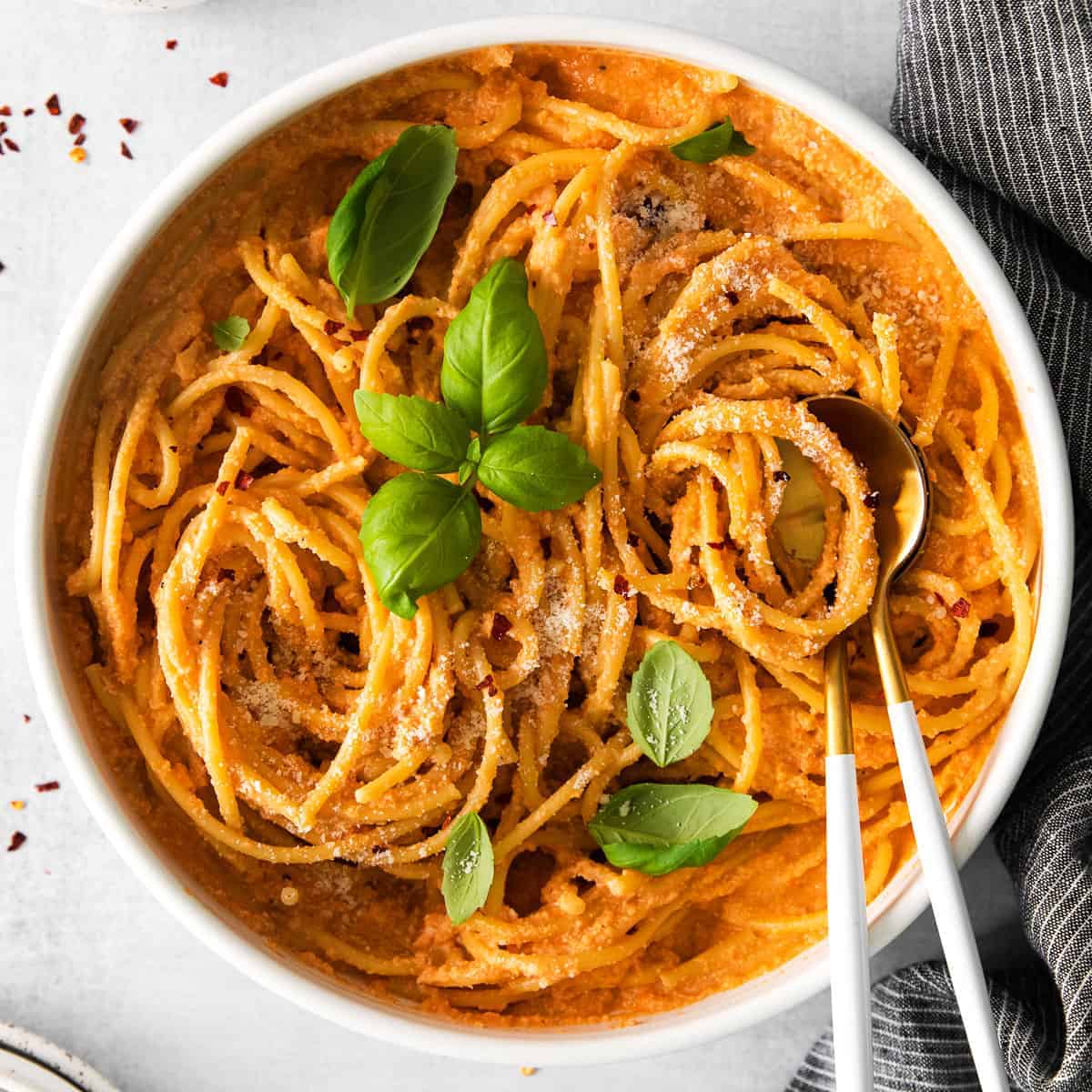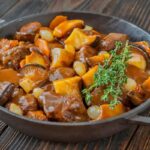Dive into a world of vibrant flavors and textures with our comprehensive guide to vegan pasta dishes. From creamy cashew-based sauces to quick weeknight meals and globally-inspired recipes, we explore the endless possibilities of plant-based pasta. Discover the secrets to achieving perfectly smooth sauces, learn innovative plating techniques to elevate your presentation, and unlock the nutritional power of seasonal vegetables incorporated into delicious pasta creations. Prepare to be inspired by the diverse and delectable world of vegan pasta, a culinary adventure that caters to every taste and dietary need.
This guide offers a journey through various vegan pasta recipes, showcasing the versatility and deliciousness of plant-based cuisine. We’ll explore creamy sauces made from cashew cream, coconut milk, and sun-dried tomatoes, each with its unique flavor profile and texture. We’ll then delve into quick and easy recipes perfect for busy weeknights, followed by an exploration of international vegan pasta dishes, highlighting their cultural significance and unique ingredients. Finally, we’ll focus on seasonal vegetable pasta recipes, emphasizing nutrition and visual appeal. Each section is packed with step-by-step instructions, ingredient substitutions, and helpful tips and tricks to ensure your success in creating stunning and flavorful vegan pasta dishes.
Flavorful Vegan Pasta Dishes from Around the World

Vegan pasta dishes offer a vibrant and exciting culinary journey, transcending geographical boundaries and showcasing the versatility of plant-based ingredients. From the sun-drenched shores of Italy to the bustling streets of Mexico City and the serene landscapes of Japan, vegan pasta recipes demonstrate the global appeal of this comforting food. Exploring these diverse culinary traditions reveals innovative cooking techniques and unique flavor profiles that are both delicious and surprisingly easy to replicate.
A Comparison of Vegan Pasta Dishes from Three Cuisines
This section compares and contrasts three vegan pasta dishes, each representing a distinct culinary tradition: a classic Italian puttanesca, a Japanese-inspired sesame-miso pasta, and a vibrant Mexican-style pasta with chipotle peppers. The comparison highlights the unique ingredients and cooking methods used in each dish.
| Dish | Cuisine | Key Ingredients | Cooking Technique | Flavor Profile |
|---|---|---|---|---|
| Vegan Puttanesca | Italian | Spaghetti, olives (green and Kalamata), capers, garlic, tomatoes (san marzano preferred), vegan anchovy substitute (e.g., marinated artichoke hearts), chili flakes, fresh basil. | Sauté garlic, add tomatoes, olives, capers, and anchovy substitute. Simmer until sauce thickens. Toss with cooked spaghetti and garnish with fresh basil. | Savory, slightly spicy, briny, umami-rich. |
| Sesame-Miso Pasta | Japanese-inspired | Udon noodles, sesame oil, white miso paste, soy sauce (tamari for gluten-free), mirin (sweet rice wine), ginger, garlic, shiitake mushrooms (optional), toasted sesame seeds. | Sauté garlic and ginger. Add miso paste, soy sauce, and mirin, whisking until smooth. Toss with cooked udon noodles and sesame oil. Garnish with toasted sesame seeds and mushrooms. | Savory, umami-rich, subtly sweet, nutty. |
| Chipotle Vegan Pasta | Mexican-inspired | Penne pasta, chipotle peppers in adobo sauce, black beans, corn, vegan sour cream or cashew cream, cilantro, lime juice, onion, garlic. | Sauté onion and garlic. Add chipotle peppers, black beans, and corn. Simmer until heated through. Stir in cooked penne, vegan sour cream, and lime juice. Garnish with cilantro. | Spicy, smoky, savory, tangy. |
Cultural Significance of Vegan Puttanesca
The origins of Puttanesca sauce are debated, but its name, literally translating to “whore’s style,” suggests a humble, resourceful dish made with readily available ingredients. Traditional recipes often include anchovies, but a vegan version uses substitutes like marinated artichoke hearts to mimic the briny, umami flavor. While not specifically vegan in its historical context, the adaptability of the Puttanesca recipe allows for a delicious and authentic-tasting vegan adaptation that celebrates the spirit of utilizing simple ingredients to create a flavorful and satisfying meal. The vibrant colors and robust flavors reflect the rich culinary history of Italy, where resourcefulness and improvisation are valued in the kitchen.
Ingredient Substitutions for International Vegan Pasta Recipes
Adapting international vegan pasta recipes often requires substituting ingredients to accommodate dietary restrictions or preferences. Here’s a list of common substitutions:
- For Gluten-Free Diets: Substitute regular pasta with gluten-free pasta (made from rice, corn, quinoa, or other gluten-free grains).
- For Soy-Free Diets: Use tamari (gluten-free soy sauce) or coconut aminos instead of soy sauce. For miso paste, consider a soy-free alternative like chickpea miso.
- For Nut Allergies: Replace cashew cream or nut-based sauces with sunflower seed cream or other seed-based creams. Avoid dishes containing nuts.
- For Dairy-Free Diets: Vegan butter, vegan cream cheese, and vegan sour cream are readily available substitutes for their dairy counterparts.
- For Spice Level Adjustments: Adjust the amount of chili flakes or chipotle peppers to control the spiciness level according to personal preference.
Vegan Pasta with Vegetables
Vibrant, seasonal vegetables transform simple pasta into a nutritious and visually stunning meal. The key lies in selecting the freshest ingredients and employing creative plating techniques to highlight the natural beauty of the produce. This section explores three delicious vegan pasta recipes, emphasizing the nutritional benefits of each ingredient and offering tips for elevating the presentation of your dishes.
The Importance of Fresh, High-Quality Ingredients
Using fresh, high-quality ingredients is paramount to creating flavorful and nutritious vegan pasta dishes. The vibrant colors and distinct tastes of fresh vegetables significantly impact the overall sensory experience. Opting for organic produce whenever possible minimizes exposure to pesticides and supports sustainable farming practices. The difference in taste between a freshly picked tomato and one that has been sitting in storage for weeks is undeniable, translating to a superior culinary outcome. Similarly, using high-quality pasta, made from whole grains when possible, adds depth and texture to the dish. The richness of flavor and nutritional density offered by superior ingredients are crucial for a truly satisfying and healthy meal.
Summer Vegetable Pasta with Lemon-Basil Dressing
This recipe showcases the bounty of summer vegetables, including zucchini, bell peppers, and cherry tomatoes. Zucchini is a good source of vitamin C and potassium, bell peppers provide vitamin A and antioxidants, and cherry tomatoes offer lycopene, a powerful antioxidant.
- Cook pasta according to package directions.
- While pasta cooks, dice zucchini and bell peppers into bite-sized pieces. Halve cherry tomatoes.
- Sauté vegetables in olive oil until slightly softened, about 5 minutes.
- Whisk together olive oil, lemon juice, minced fresh basil, salt, and pepper for the dressing.
- Toss cooked pasta with sautéed vegetables and dressing. Garnish with fresh basil leaves.
Imagine the pasta, a vibrant yellow, tossed with the deep green of zucchini, the sunny orange of bell peppers, and the ruby red of cherry tomatoes. A sprinkle of fresh basil adds pops of green, creating a visually appealing contrast. The dish is plated artfully, with a swirl of the bright lemon-basil dressing cascading across the colorful vegetables and pasta.
Autumnal Butternut Squash and Sage Pasta
This recipe embraces the warm flavors of autumn, featuring butternut squash and sage. Butternut squash is rich in beta-carotene, which the body converts to vitamin A, and provides fiber. Sage offers antioxidants and has anti-inflammatory properties.
- Roast cubed butternut squash with olive oil, salt, and pepper at 400°F (200°C) until tender.
- Cook pasta according to package directions.
- While pasta cooks, sauté chopped fresh sage in olive oil until fragrant.
- Toss cooked pasta with roasted butternut squash and sautéed sage.
- Finish with a drizzle of olive oil and a sprinkle of grated vegan parmesan cheese (optional).
Picture the creamy, orange butternut squash nestled amongst the golden strands of pasta. The deep green of the sage leaves provides a striking contrast against the warm tones of the squash. A simple drizzle of olive oil adds a sheen, enhancing the visual appeal. The dish is served in a shallow bowl, allowing the vibrant colors and textures to shine.
Winter Vegetable Pasta with Creamy Cashew Sauce
This hearty recipe utilizes winter vegetables like broccoli, carrots, and Brussels sprouts. Broccoli is an excellent source of vitamin C and fiber, carrots provide beta-carotene, and Brussels sprouts offer vitamin K and fiber.
- Steam or roast broccoli florets, sliced carrots, and halved Brussels sprouts until tender-crisp.
- Cook pasta according to package directions.
- Prepare a creamy cashew sauce by blending soaked cashews with water, nutritional yeast, lemon juice, garlic, and salt until smooth.
- Toss cooked pasta with roasted vegetables and cashew sauce.
- Garnish with toasted pine nuts or chopped fresh parsley.
The deep green of the broccoli, the bright orange of the carrots, and the deep green of the Brussels sprouts create a beautiful visual contrast against the creamy white cashew sauce. The pasta is arranged artfully in a bowl, with the vegetables carefully placed on top, creating a visually appealing and delicious dish. A sprinkle of toasted pine nuts adds a textural element and a touch of elegance.
Unleash your inner chef and embark on a culinary journey filled with vibrant colors, tantalizing aromas, and the satisfying textures of perfectly cooked pasta. This exploration of vegan pasta dishes has showcased the boundless creativity and deliciousness achievable with plant-based ingredients. From creamy dreaminess to quick and easy weeknight wonders, and globally-inspired masterpieces, the possibilities are as diverse and exciting as the world itself. So, gather your ingredients, embrace the adventure, and prepare to delight your taste buds and impress your guests with these unforgettable vegan pasta creations. The journey to delicious, healthy, and satisfying meals is just a recipe away.
FAQ Guide
Can I use gluten-free pasta in these recipes?
Absolutely! Most of these recipes work equally well with gluten-free pasta. Just be sure to check the cooking time on your chosen pasta brand.
How can I store leftover vegan pasta?
Store leftover pasta in an airtight container in the refrigerator for up to 3-4 days. Reheat gently in a pan or microwave.
What are some good vegan cheese substitutes for pasta dishes?
Nutritional yeast adds a cheesy flavor, while vegan cheeses (made from soy, cashew, or other plant-based ingredients) are readily available in most grocery stores.
Can I make these recipes ahead of time?
Some recipes, like the creamy sauces, can be made a day ahead. However, it’s best to cook the pasta and combine it with the sauce just before serving for optimal texture.


